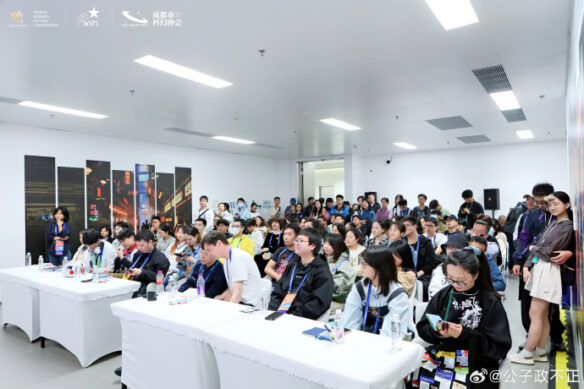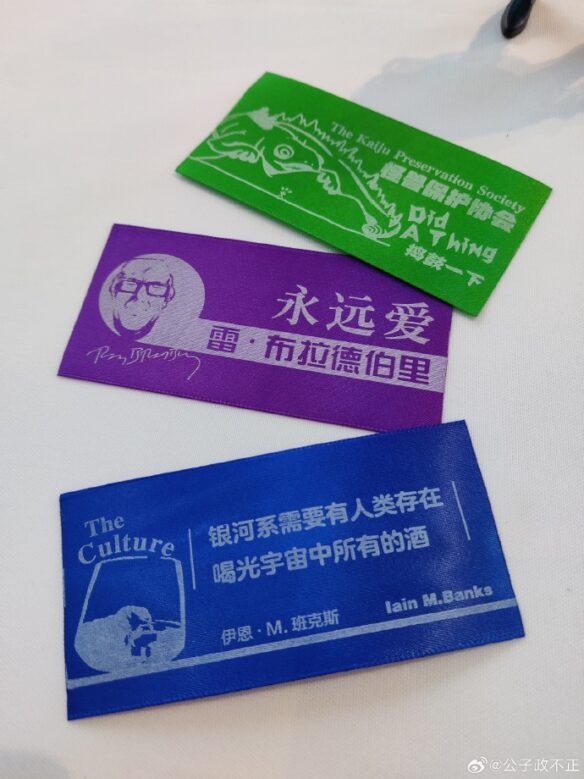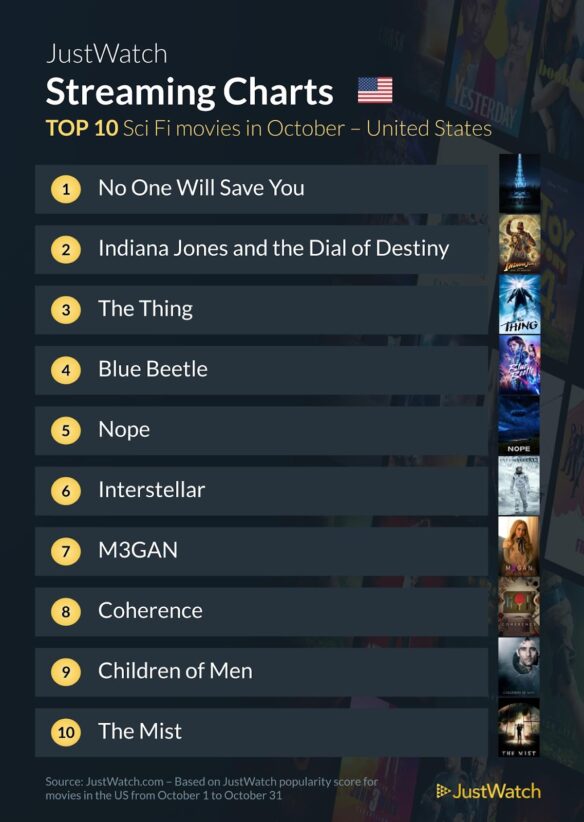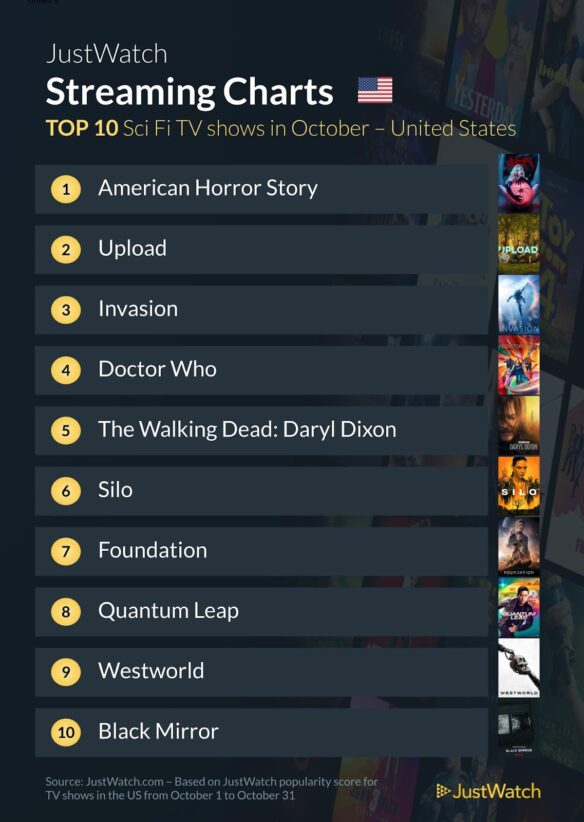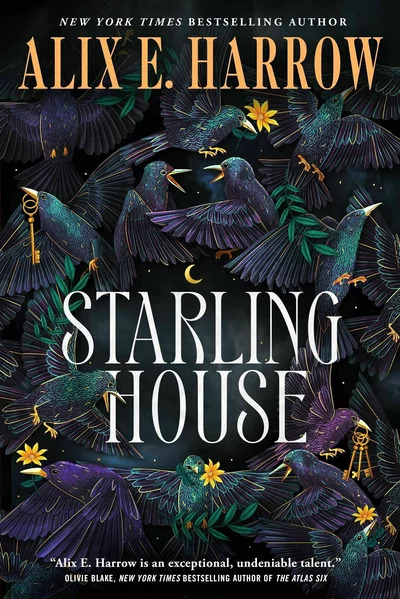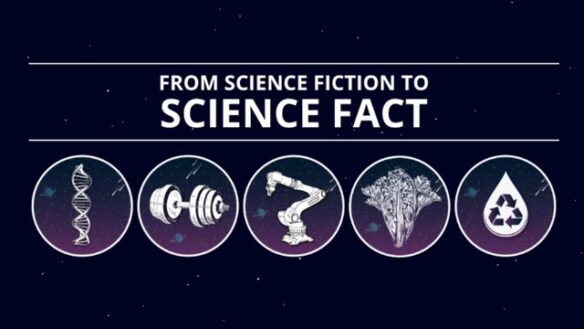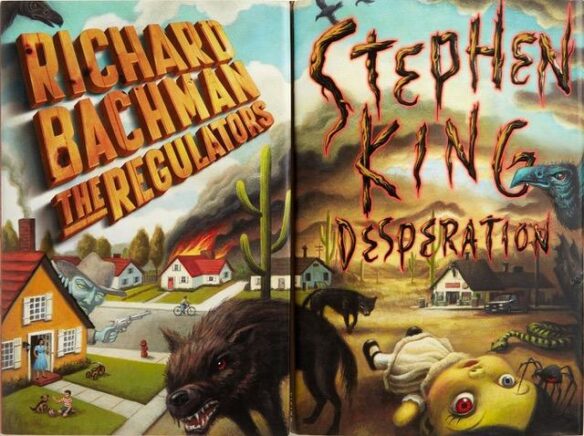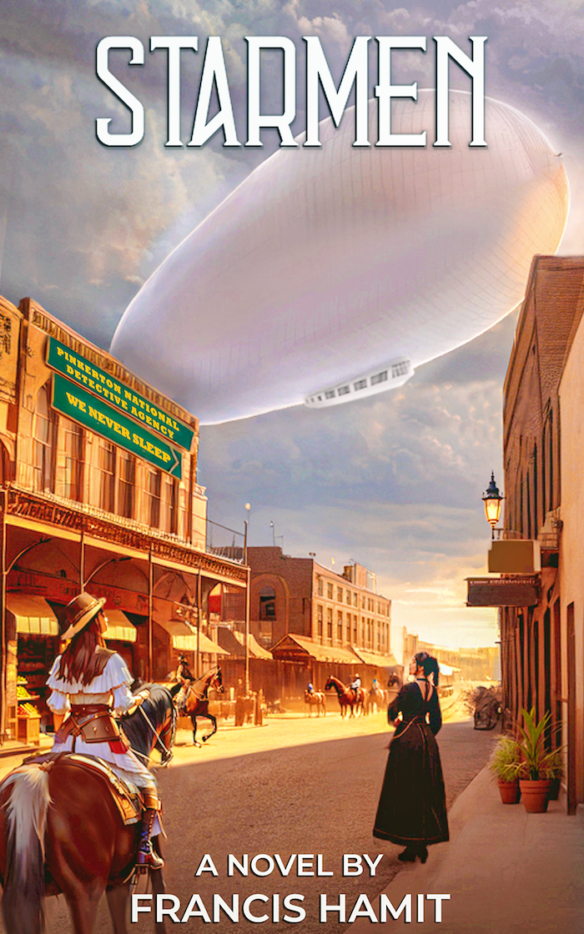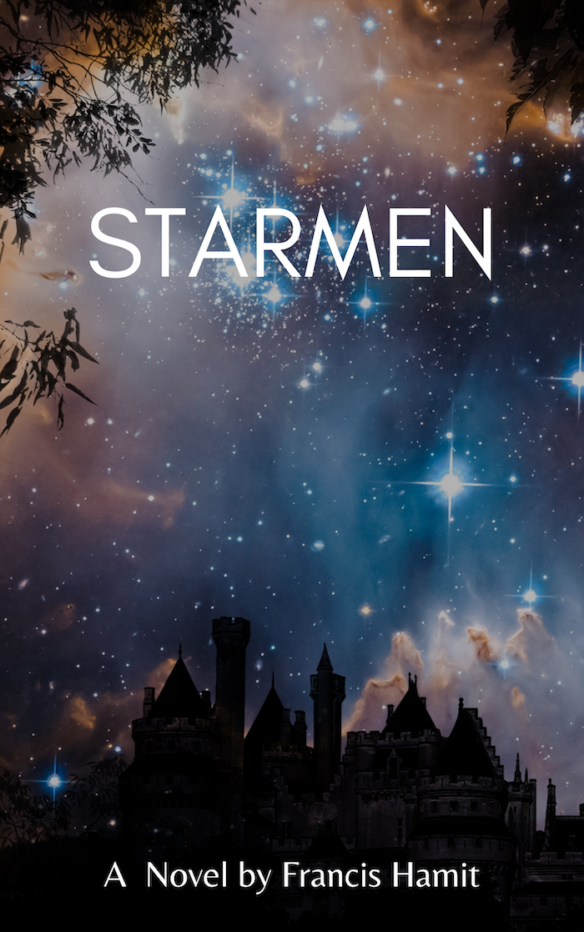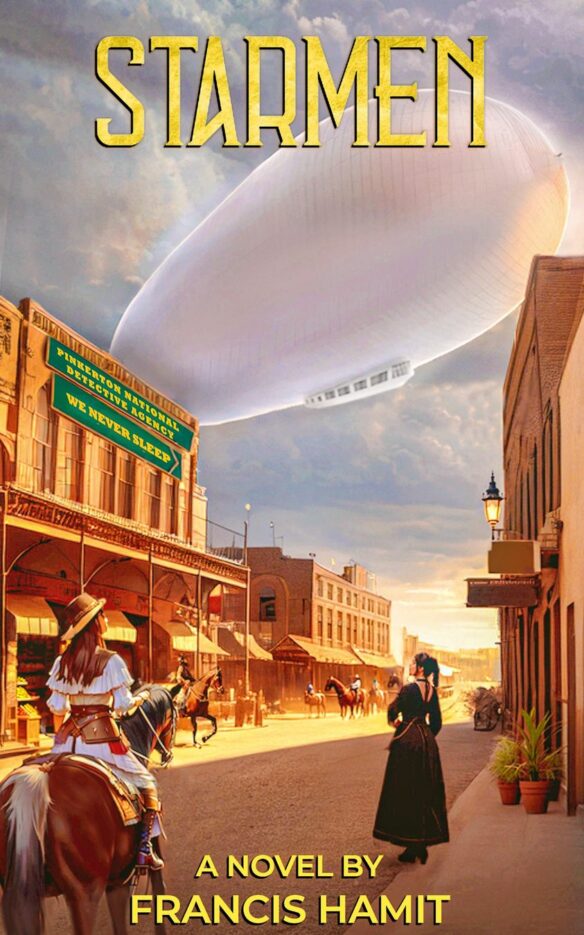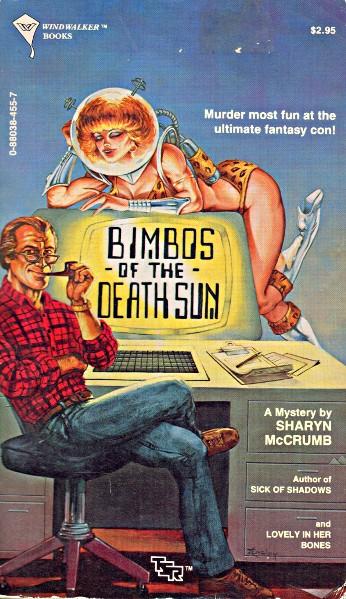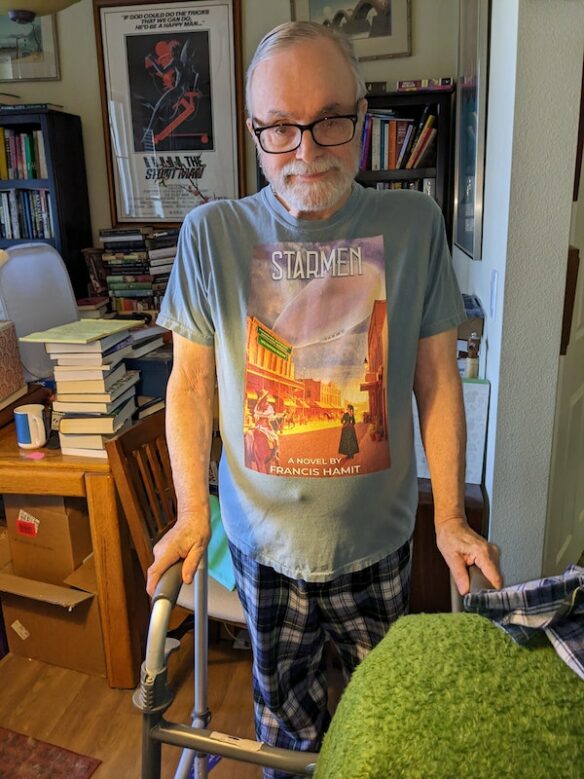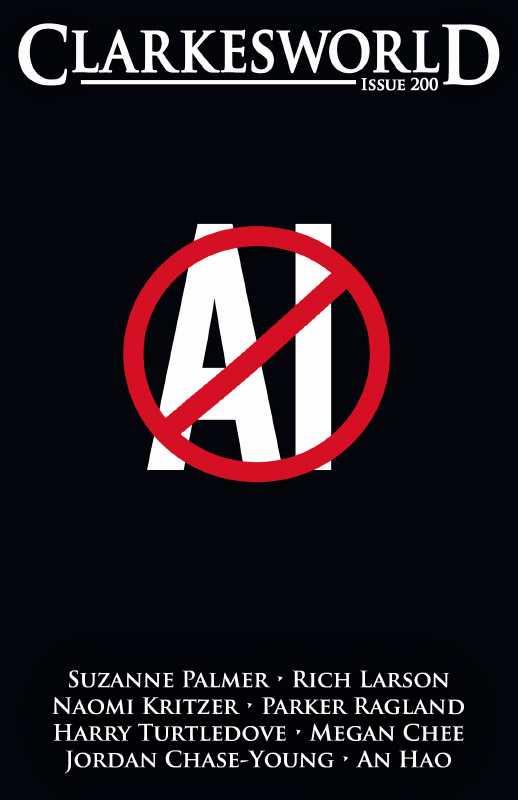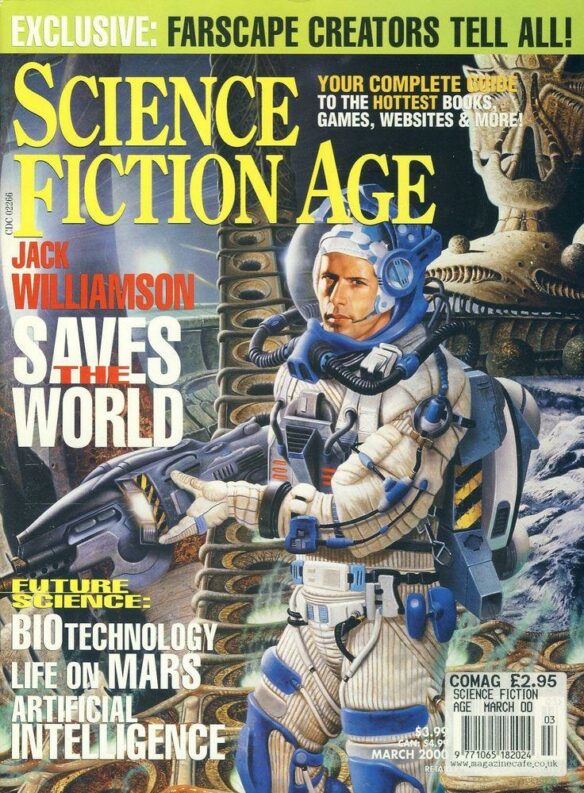(1) SFWA NEBULA FINALIST ANNOUNCMENT TOMORROW. The Science Fiction & Fantasy Writers Association (SFWA) will announce the 2023 Nebula Award finalists (to be presented this year in Pasadena) on the SFWA Youtube channel, tomorrow, March 14, starting at 5:00 p.m. Pacific.
Once again, we’ll be calling upon a talented group of SAG-AFTRA narrators to take us through an evening filled with a variety of outstanding speculative fiction works.
It’s sure to be a night to remember! We hope you’ll join us!
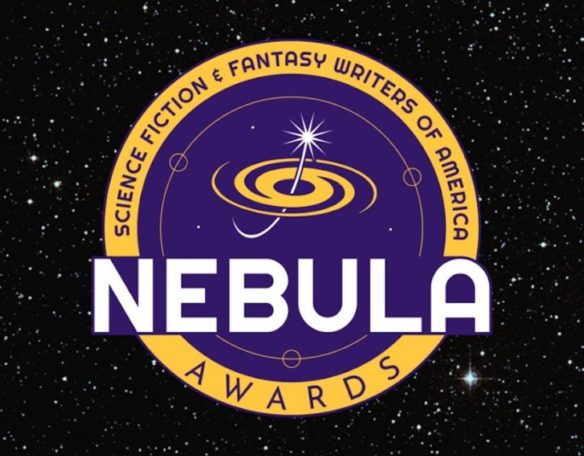
(2) NEBULA CONFERENCE SCHOLARSHIP DEADLINE. Also tomorrow — March 14, is the deadline to apply for the scholarships SFWA is offering for members of under-served communities to attend the Nebula conference! The 2024 Nebula Conference will take place June 6-9 in Pasadena, CA and online. If you or someone you know may benefit from these scholarships, please apply here or share this link: https://airtable.com/appqxO86fh6JpPBNR/shrjMcYbZyuTxhwVH
Scholarship applications must be completed on this form by March 14th, 2024. The scholarship recipients will be selected from the applicant pool by lottery. Applicants may be considered for more than one scholarship if they identify with more than one of the following groups.
Here are the categories of scholarships being offered and the number of online conference scholarships available for each:
- Scholarship for Black and/or Indigenous Creators: This scholarship is open to Black and/or Indigenous creators in the United States and abroad. (quantity: 15 online scholarships)
- Scholarship for AAPI Creators: This scholarship is available to Asian creators, Asian American creators, and creators from the Pacific Islands. (quantity: 15 online scholarships)
- Scholarships for Hispanic/Latinx Creators: This scholarship is available to creators with backgrounds in Spanish-speaking and/or Latin American cultures. (quantity: 15 online scholarships)
- Scholarship for Writers Based Outside of the U.S.: This scholarship is available to creators who live outside the United States. (quantity: 15 online scholarships)
- Scholarship for members of the LGBTQIA+ Community: This scholarship is available to creators who identify as LGBTQIA+. (quantity: 15 online scholarships)
- Scholarship for creators with disabilities: This scholarship is available to creators who identify as having a disability. (quantity: 15 online scholarships)
- Scholarship for creators who face financial barriers: This scholarship is available to creators whose financial situations may otherwise prevent them from participating. (quantity: 15 online scholarships)
- Scholarship for in-person registration are available in limited quantities for creators who identify with one of our online scholarship groups. This scholarship does not include funds for travel, lodging or other related expenses to attend the conference, only for registration.
SFWA says, “Our support of underserved communities isn’t possible without your help. If you are able, please consider making a donation at sfwa.org/donate to help us fund additional scholarships in the future.”
(3) COMPLETE TOLKIEN POEMS VOLUME PLANNED. “Collected poems of J R R Tolkien to be published for first time” — The Bookseller has details.
HarperCollins will publish The Collected Poems of J R R Tolkien, edited by Christina Scull and Wayne G Hammond, in September 2024, the first time all the author’s poems will appear in one volume.
HC, which holds world all-language rights to Tolkien’s works, said: “Poetry was the first way in which Tolkien expressed himself creatively and through it the seeds of his literary ambition would be sown.” One of Tolkien’s poems “The Voyage of Éarendel the Evening Star”, begun in 1914, is where the “Silmarillion” first appears and both The Hobbit and The Lord of the Rings “are enriched with poems both humorous and haunting, magical and moving”. Tolkien scholars Scull and Hammond will provide analysis of each poem.
Scull and Hammond were hired for the project by Christopher Tolkien’s, J R R Tolkien’s son and executor of his literary estate until Tolkien died in 2020. They said: “Charged at first to review only his early poems, we soon saw the benefits of examining the entire poetic opus across six decades, vast though it is with hundreds of printed and manuscript sources…Not long before his death, we were able to send Christopher a trial portion of the book, which he praised as ‘remarkable and immensely desirable’.”…
(4) SPEAKING OF. “The Oral History of ‘Repo Man,’ the Greatest Indie Sci-Fi Movie Ever Made” at Inverse.
Somewhere in the California desert, a police officer pulls over a 1964 Chevrolet Malibu as it lurches wildly across the highway. After interrogating the driver, he opens the trunk and is instantly vaporized by a blinding light that reduces him to a skeleton, leaving behind only a pair of smoldering leather boots.
Thus begins Repo Man, a sci-fi cult classic sci-fi with a nihilistic worldview and a punk rock soundtrack that by all accounts probably shouldn’t exist….
…Dick Rude (plays Duke): I was a teenager going to the Lee Strasberg Theatre Institute in Los Angeles. I wrote a script called Leather Rubberneck with a friend of mine from school, about two kids who get drafted. Alex [Cox, writer and director] wanted to make the film, but it didn’t pan out. So he incorporated it into Repo Man. A lot of the characters, some of the dialogue, some of the ideas, there was quite a bit of it that was used in Repo Man….
Jonathan Wacks: We went through the Yellow Pages and looked up studios and producers and we sat and typed letters. We knew they wouldn’t pick up our phone. We sent hundreds of letters out and got zero responses. So we decided to raise $500,000 and shoot it at UCLA so we could use the equipment for free.
Peter McCarthy: The thing with UCLA is you never wanted to get your diploma. Once you did, you couldn’t go back and use anything….
Olivia Barash: I was talking to Alex, and I said, “Who are you going to have do the title track?” And he goes, “There’s one of two people. David Byrne, we have something out to his agent. But I really want Iggy Pop, we just don’t know where to find him.” And I said, “I know where to find him. He’s in my building. He’s my neighbor.” So Alex came over, and we rang the intercom outside, and Iggy answered. And that’s how we got Iggy….
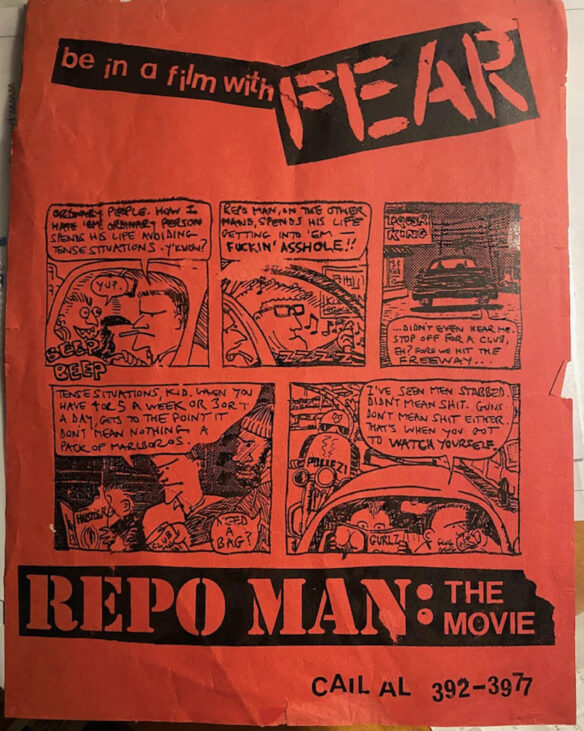
(5) J-LO AND AI. “’Atlas’ trailer: Jennifer Lopez uses AI to save humanity in sci-fi thriller” – here’s Mashable’s introduction:
The first trailer for Netflix’s futuristic sci-fi thriller Atlas is here, featuring Jennifer Lopez having a very bad day.
Atlas follows the titular character Atlas Shepherd (Lopez), a government data analyst with a healthy distrust of artificial intelligence. However, after a mission to capture a rogue robot from her past goes wrong, she soon finds herself having to trust AI in order to save humanity. If AI wrote propaganda, this is probably what it would sound like….
(6) IT’S A TIE. “Reading with… Liz Lee Heinecke” at Shelf Awareness.
…Favorite book when you were a child:
It’s a three-way tie, with a few runners-up.
As a kid, I desperately wanted a horse but knew I would never have one, so I lived vicariously through Maureen and Paul Beebe’s adventures in Misty of Chincoteague by Marguerite Henry and illustrated by Wesley Dennis.
Dragonsong by Anne McCaffrey had it all as far as I was concerned: a gifted girl who isn’t allowed to be a musician because of her gender, tiny, colorful dragons called fire lizards, and a nearby planet that rained down flesh-eating parasites frequently enough to keep things exciting. I probably read it 20 times.
The Tombs of Atuan is the second book in Ursula K. Le Guin’s Earthsea series and features a female protagonist who struggles against the confines of a role that’s been chosen by others. Most of the story takes place in a nightmarish underground labyrinth, where Le Guin’s hero Ged (Harry Potter’s prototype) struggles to steal a talisman. I loved everything about it.
I was always on the lookout for books about girls on adventures. When visiting the library, I often checked out Astrid Lindgren’s Pippi Longstocking books or the Danny Dunn series by Raymond Abrashkin and Jay Williams, which features a girl who loves physics.
Your top five authors:
Ursula K. Le Guin: She caught my attention as a middle-grade reader with her Earthsea fantasy series and has kept me captivated as an adult.
She uses science fiction to escape the social confines of our planet and explores themes of colonization, race, environmental destruction, political systems, gender roles, and sexuality without ever losing sight of the story. The Word for World Is Forest, The Dispossessed, and The Left Hand of Darknessare three of my favorites.
Amy Tan: I can’t recall whether The Kitchen God’s Wife or The Joy Luck Clubwas my first Amy Tan book. I adore the funny, relatable stories she tells about women and family, and enjoy learning about Chinese culture and history. The Bonesetter’s Daughter, which weaves science and anthropology into the story, was fantastic too. I became an even bigger fan after hearing Tan sing with the Rock Bottom Remainders at First Avenue a few years ago.
J.R.R. Tolkien: I can’t count how many times I’ve re-read The Lord of the Rings. I love losing myself in Middle-earth, with its mountains and languages and monsters and lore, and I’ve always been a sucker for a well-told hero’s journey.
Margaret Atwood: Sometimes I think she can see the future. The Handmaid’s Taleis a masterpiece in so many ways. I heard her speak once, and I recall her saying that she grew up reading science fiction stories with her brother. It’s amazing how the books we read as children shape us as adults.
Ann Patchett: She has been one of my favorite authors for years. As a reader interested in themes of music, science, and theater, she’s hit the mark over and over again with books like Bel Canto, State of Wonder, and Tom Lake. I can’t wait to see what she writes next….
(7) THE WRITERS’ PRIZE. A non-genre work, Liz Berry’s The Home Child, was announced as the winner of the poetry category (£2000) and The Writers’ Prize Book of the Year (£30,000) at the London Book Fair on March 13.
Born in the Black Country and now living in Birmingham, The Home Child was inspired by the story of Berry’s great-aunt Eliza Showell, one of the many children forcibly emigrated to Canada as part of the British Child Migrant Schemes. This beautiful novel-in-verse about a child far from home was described as ‘absolutely magical’ by Fiona Benson.
The book achieved the highest number of votes from the 350+ celebrated writers in the Folio Academy, who exclusively nominated and voted for the winners of The Writers’ Prize 2024.
(8) TODAY’S BIRTHDAY.
[Written by Cat Eldridge.]
Born March 13, 1956 — Dana Delany, 68. I remember Dana Delany best for her role as nurse Colleen McMurphy on China Beach, set at a Vietnam War evacuation hospital. It aired for four seasons starting in the late Eighties. Great role, fantastic series. I rewatched it a decade or so ago on DVD — it held up very well.

So let me deal with her main genre role which was voicing Lois Lane. She first did this twenty years ago in Superman: The Animated Series for forty-four episodes, an amazing feat by any standard. That role would come again in Superman: Brainiac Attacks, Justice League: The Flashpoint Paradox (avoid if you’ve got even a shred of brain cells), in a recurring role on the Justice League and Justice League Unlimited series, The Batman and even in the Superman: Shadow of Apokolips game.
Her other voice role of note was for Wing Commander Academy as Gwen Archer Bowman. And she wasn’t Lois Lane but Vilsi Vaylar in Batman: The Brave and the Bold’s “The Super-Batman of Planet X!”.
She’ll have a one-off on Battle Galactica as Sesha Abinell; more significantly she has a starring role as Grace Wyckoff in the Wild Palms series.
Oh, she showed up on Castle as FBI Special Agent Jordan Shaw in a two-part story, the episodes being “Tick, Tick, Tick…” and “Boom!”.
So I’m going to finish with her role in Tombstone, Emma Bull and Will Shetterley’s favorite Western film along with the Deadwood series. It’s an inspiration she says for her Territory novel. And I love it as well. Delany played magnificently Josephine Sarah “Sadie” Earp, the common-law wife of Wyatt Earp. The final scene of them dancing in the snow in San Francisco is truly sniffles inducing.
(9) CREATOR CANNED. Variety reports “X-Men ’97 Creator Beau DeMayo Fired Ahead of Premiere on Disney+”. Article does not give a reason.
Beau DeMayo, the showrunner and executive producer behind Disney+’s upcoming animated series “X-Men ’97,” has been fired ahead of the March 20 premiere, Variety has confirmed.
DeMayo had completed work on Seasons 1 and 2 of “X-Men ’97” ahead of his exit. He will not attend the March 13 Hollywood premiere for the show. His Instagram account, on which he had been previewing artwork and answering fan questions about “X-Men ’97,” has also been deleted.
He wrote and produced “X-Men ’97,” which is a continuation of the popular “X-Men: The Animated Series” that aired on Fox Kids in the ’90s. It is unclear why DeMayo was fired from “X-Men ’97” so close to the premiere, but he will no longer promote the show or be involved with future seasons….
(10) NO MICHELIN STARS FOR MORDOR. CBR.com chronicles “Every Meal Hobbits Eat In Tolkien’s The Lord of the Rings”.
Peter Jackson and actor Billy Boyd found a memorable way to convey that love in The Lord of the Rings: The Fellowship of the Ring. As Aragorn leads the Hobbits toward Rivendell, Pippin asks about “second breakfast” and a litany of additional meals that will presumably be skipped as they continue. Tolkien specified six meals in the Prologue to The Fellowship of the Ring — which roughly match European traditions — but two of them are essentially the same meal. Here’s a rundown of each one to give a good idea of what Pippin is missing….
Here’s the one I’m always interested in:
Second Breakfast
Tolkien mentions second breakfast in The Hobbit, with Bilbo settling down to his just as Gandalf appears to tell him that the Dwarves have already left for The Lonely Mountain. It serves as a quiet joke — stressing that Hobbits in general and Bilbo in particular enjoy eating — as well as emphasizing the comfortable lifestyle he’s leaving behind to go on his adventure with the Dwarves. It also serves as the inspiration for Pippin’s line about second breakfast in The Fellowship of the Ring, which he doesn’t deliver in Tolkien’s text.
(11) PRAISE FOR STARMEN. [Item by Francis Hamit.] Demetria Head is a book blogger, one of that legion of reviewers who do it without pay and for the joy of it. Ms. Head actually read the entire book and delivered an almost forensic analysis. I think her work deserves wider exposure.
Demetria Head Review from BookBub and A Look Inside book blogs
“STARMEN” by Francis Hamit is a sprawling epic that seamlessly blends elements of magical realism, historical fiction, and sci-fi fantasy to create a mesmerizing tale that will captivate readers from start to finish. Set against the backdrop of the American Southwest in 1875, the novel introduces us to a cast of richly drawn characters whose lives become intertwined in a web of intrigue, adventure, and supernatural mystery.
At the heart of the story is George James Frazer, a budding anthropologist working for the Pinkerton National Detective Agency, whose quest to contact a local Apache tribe leads him on a journey beyond the realms of ordinary reality. When a mysterious hot air balloon appears over the town of El Paso, owned by the British Ethnographic Survey, Frazer finds himself drawn into a world of ancient magic and hidden truths.
The characters in “STARMEN” are truly the heart and soul of the novel, each one fleshed out with depth and nuance that makes them feel like living, breathing individuals. From the determined and resourceful Frazer to the enigmatic Apache witches and the ruthless Pinkerton agents, every character brings their own unique perspective to the narrative, driving the plot forward with their conflicting desires and motivations.
Plot development in “STARMEN” is masterfully executed, with Hamit weaving together multiple storylines that intertwine and intersect in surprising and unexpected ways. From the quest to find a missing heir to the discovery of a town inhabited by extraordinary gunfighters, each twist and turn of the plot unfolds with breathtaking intensity, keeping readers on the edge of their seats until the very last page.
What truly sets “STARMEN” apart is its seamless blend of genres, incorporating elements of historical fiction, magical realism, and hard sci-fi into a cohesive and compelling narrative. From the romantic entanglements to the political intrigue and the mind-bending concepts of quantum mechanics and string theory, the novel offers something for every reader, appealing to fans of both traditional historical fiction and speculative fiction alike.
Overall, “STARMEN” is a tour de force of storytelling that will transport readers to a world of adventure, mystery, and wonder. With its unforgettable characters, intricate plot, and bold exploration of complex themes, it is a must-read for anyone seeking an immersive and thought-provoking literary experience.
(13) SHAKEN TO THEIR CORE. [Item by SF Concatenation’s Jonathan Cowie.] I have not seen it yet (but have downloaded to mem stick for home viewing – it might be rubbish???) In the TV series Pending Train, “100 People Accidently Time-Travel By Train to a Destroyed Earth in 2063”. See video at the link.
In Tokyo, train passengers find themselves fighting for their very survival after their train car jumps into an apocalyptic future
(14) ON THE AIR. Breathe (2024) with Jennifer Hudson, Milla Jovovich, Sam Worthington, Common, and Quvenzhané Wallis. In Theaters, On Digital, and On Demand April 26.
(15) VIDEO OF THE DAY. How It Should Have Ended brings us up to date with “Previously On – DUNE”.
[Thanks to Mike Kennedy, Andrew Porter, John King Tarpinian, Francis Hamit, Chris Barkley, Cat Eldridge, SF Concatenation’s Jonathan Cowie, and Steven French for some of these stories. Title credit belongs to File 770 contributing editor of the day Cat Eldridge.]



